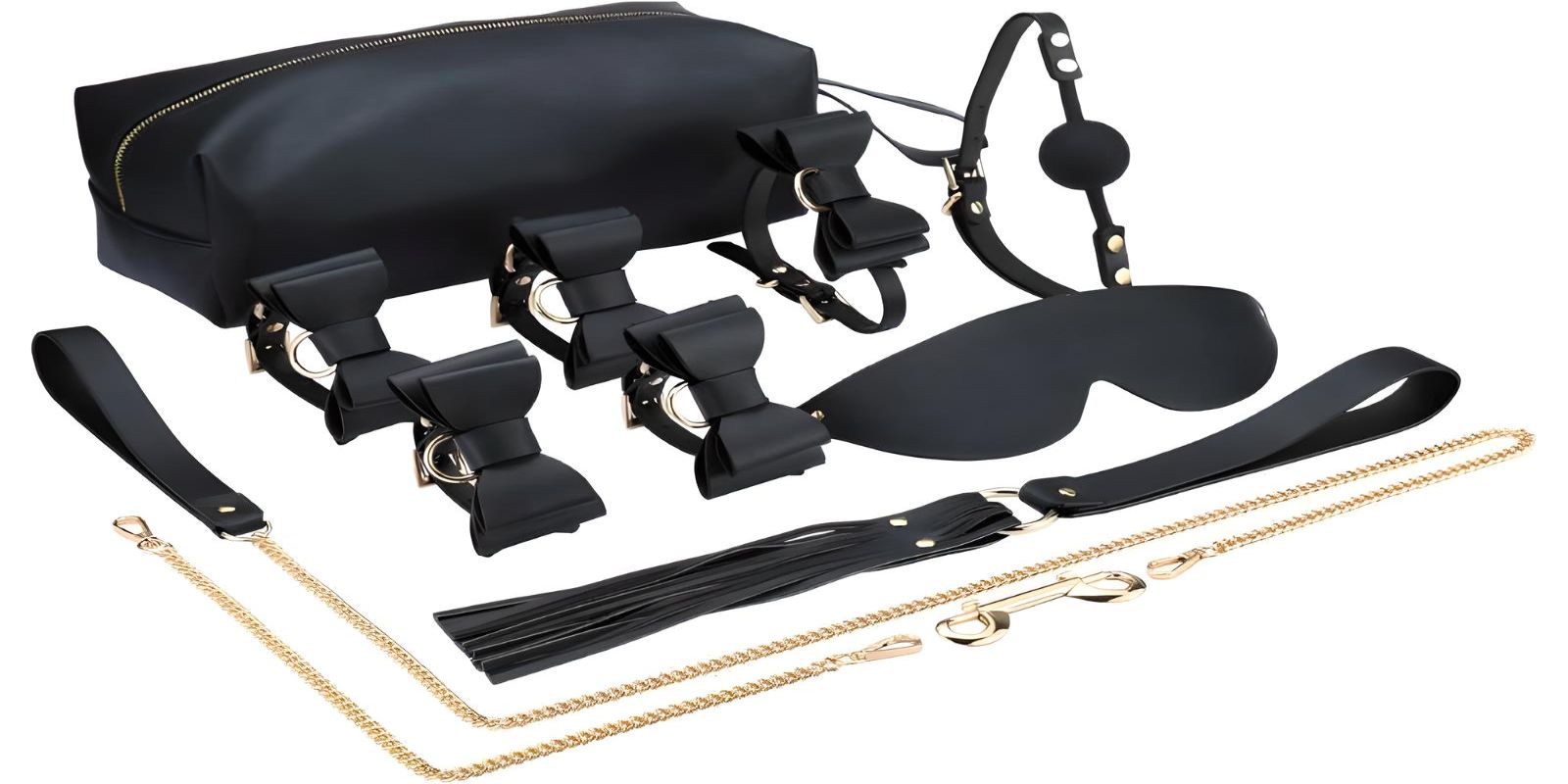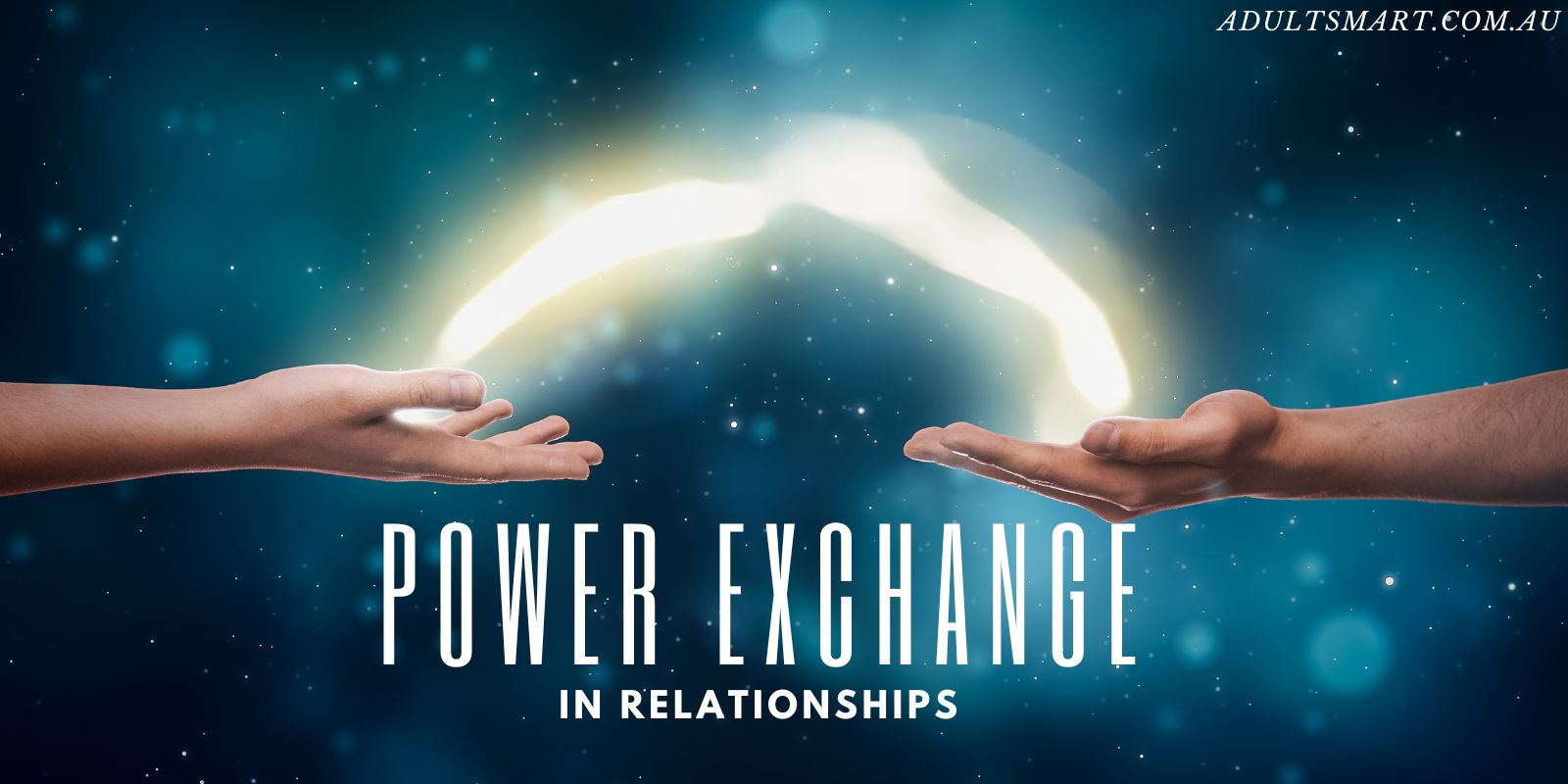Power Exchange in Relationships: Consent, Trust, and Shared Control
Power Exchange in relationships isn’t only about kink or bedroom play. It’s the intentional choice to share, offer, or guide control in a way that strengthens connection. Some couples love the erotic thrill of clear roles. Others enjoy the comfort and clarity of knowing who leads in certain moments. When done consensually, power can feel grounding, playful, or deeply intimate.
This dynamic isn’t about dominance in the unhealthy sense. It’s about choosing how energy flows between you. Power can shift gently or stay structured, depending on what feels right. The beauty is that it’s fully customisable. You can build a system that fits your relationship, identity, and comfort level, without copying anyone else’s version.
Table of Contents
- What Power Exchange in Relationships Really Means
- Consent and Communication: The Core Rules
- Types of Power Exchange Dynamics
- Power Exchange Outside the Bedroom
- Erotic Play and Power: Exploring Roles Safely
- Red Flags and When Power Stops Being Healthy
- Key Takeaways
- FAQs
What Power Exchange in Relationships Really Means
Power Exchange in relationships is a consensual dynamic where one partner offers control and another leads with care. This flow can be light and sensual or deep and structured. What makes it powerful isn’t the “roles” themselves—it’s the clarity, trust, and intention behind them. When both partners choose the dynamic with awareness, it creates a safe container for desire, expression, and emotional vulnerability.
This kind of exchange can show up in three main ways. Emotionally, one partner may take a steady, grounding role while the other relaxes into guidance or support. Practically, it may involve shared routines, rituals, or decisions that follow a chosen structure. Erotically, it can involve titles, tone, posture, instruction, or surrendered pleasure. For a grounded explanation of how to keep these dynamics ethical, this breakdown of ethical power exchange highlights how consent and self-awareness turn power into connection rather than control.
The key is choice. Some couples only use PE in play. Others weave it into the relationship more consistently. It can be tender, firm, playful, ritualistic, sensual, or quietly supportive. There is no single “correct” way to do it—only what is safe, consensual, and fulfilling for the people involved.
Consent and Communication: The Core Rules
Consent isn’t a box to tick—it’s the foundation that keeps power hot, not harmful. Start with clear conversations about what kind of dynamic you want to explore and at what intensity. You don’t need a full contract, but agreements around tone, language, and boundaries give both people confidence. Without clarity, one person can feel lost or overwhelmed, especially if the dynamic shifts faster than expected.
Think of communication as the “fuel” that keeps the dynamic running smoothly. Simple tools like safe words, pause phrases, or coloured check-ins (green/amber/red) create safety without removing heat. Aftercare is essential too. Once roles soften, take time to reconnect in a neutral, caring way. This isn’t just for impact or intense scenes—even soft PE benefits from a check-in to see how the dynamic felt emotionally and physically.
For ideas on how to shape these talks in a way that still feels sexy and charged, the Guide to Sensual Domination offers language and mindset tips for blending eroticism with emotional care. Remember: communication doesn’t kill the mood. It opens the door for hotter, safer, and more confident power play.
Types of Power Exchange Dynamics
There are many ways to enjoy Power Exchange in relationships. Some couples use it only in erotic play, others weave it into daily life. It can be firm, soft, ritual-based, or flexible. What matters is that the roles feel chosen, exciting, and respectful for everyone involved. There’s no standard script to follow—you create your own version together.
Scene-based PE is short-term and used only during planned intimate moments. Lifestyle PE continues outside the bedroom, with partners keeping roles for longer periods in agreed ways. Soft PE offers light guidance and structure without strict rules. Many queer couples also enjoy role fluidity, shifting roles depending on mood, context, or emotional needs. For reflections on how different dynamics work, this piece on lived power exchange explores how couples adjust their balance over time.
When I first negotiated a PE dynamic, I expected it to feel rigid. Instead, what surprised me most was how freeing it felt. My partner and I shifted roles based on what we needed that night rather than sticking to one identity. That flexibility made the power feel like a resource, not a restriction—and it kept our connection lively instead of scripted.
Power Exchange Outside the Bedroom
Power Exchange doesn’t need to be erotic to be intimate. Many couples enjoy a soft form of it through routines, language, or shared agreements that make life feel smoother and more connected. This might look like one partner guiding certain decisions, setting a tone for the day, or taking on a nurturing or grounding role while the other softens and follows. These exchanges build trust and emotional safety without any sexual context.
Outside-the-bedroom PE works best when it feels supportive rather than controlling. It’s less about “obeying” and more about offering comfort, care, or leadership in chosen areas. Some couples use rituals like morning check-ins, daily affirmations, or end-of-day debriefs. Others enjoy small gestures of service or guidance that reinforce the dynamic gently across the week.
- Choose a daily or weekly ritual where roles are active for 10–20 minutes.
- Use tone and language that match the dynamic, even in non-sexual moments.
- Set one simple task or area of life where guidance or service is exchanged by agreement.
Erotic Play and Power: Exploring Roles Safely
Bringing Power Exchange into erotic play adds spark, tension, and psychological heat. Roles like Dom, sub, or switch can shape the energy of a scene through voice, eye contact, posture, and instruction. You don’t need chains or a dungeon for this to feel intense. A change in tone, a held gaze, or a simple “come here” can shift the power instantly when both partners are tuned in.
Keep the dynamic rooted in care rather than pressure. Start with soft exploration and build intensity only if both partners want it. If you’re curious about exploring from the submissive side, Be a Better Submissive offers mindset and skill tips. For people who lean more dominant, Dating a Dominatrix gives a look at confidence and leadership within kink, especially for those attracted to strong feminine Dom energy.
- Try a short, timed power scene (5–15 minutes) to explore roles with low pressure.
- Pair eye contact with a simple command to build erotic tension.
- Use titles, posture, or ritual to shift into your chosen roles.
- After play, share one thing each of you enjoyed and one adjustment for next time.
Red Flags and When Power Stops Being Healthy
Power Exchange should feel exciting, supportive, and chosen—not draining or one-sided. If one partner starts ignoring boundaries, using roles to avoid accountability, or pushing control outside the agreed space, that’s not PE—it’s manipulation. A healthy dynamic allows both partners to speak up, slow down, or change the agreement at any time without fear.
If something feels off, pause the dynamic and return to neutral. Have an honest talk about what didn’t feel good and what needs to shift to restore trust. You don’t need to “push through” discomfort to keep the peace. Resetting, reducing intensity, or taking a break protects the bond. Ethical PE always makes room for change and mutual care.

Key Takeaways
- Power Exchange in relationships works when consent, clarity, and trust come first.
- There’s no single “right” style—PE can be soft, erotic, playful, or lifestyle-based.
- Communication and aftercare strengthen the dynamic and deepen intimacy.
- Roles can shift—flexibility keeps the power dynamic alive and healthy.
- If the exchange stops feeling safe or chosen, pause and reset with honesty.
FAQs
Q1. Can power exchange exist without kink?
Yes. Many couples enjoy soft forms of Power Exchange in relationships through rituals, routines, or shared roles that aren’t sexual at all. It can be emotional, supportive, or practical.
Q2. Can couples switch roles?
Absolutely. Some partners stay in consistent roles, while others switch based on mood, context, or who needs support that day. Role fluidity is common, especially in queer relationships.
Q3. How do you rebuild trust after a boundary slip?
Pause the dynamic and talk openly. Own what happened, apologise if needed, and adjust rules or intensity. Slow rebuilding with check-ins helps restore safety.
Q4. Do you need contracts?
No. Some couples love written agreements, but they’re optional. What matters is clear, ongoing consent. A simple verbal check-in routine is enough for most.
Q5. Can long-distance couples do PE?
Yes. Many use voice notes, video calls, tasks, rituals, or scheduled roleplay sessions to stay connected. Consistency and communication make distance dynamics work.

Meet Bronte, our sexpert at the Adultsmart blog. A pansexual cis woman, she dives into LGBTQ+ topics, fetish exploration, sex work, and sex toy reviews!








Leave a Reply